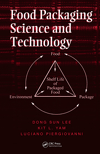Flexible Packaging recently caught up with Jaime Manon Macias, market segment manager – flexible packaging, BASF Corporation, for an overview on resins.
Q: What’s new in the world of resins/raw materials when it comes to flexible packaging?
A: BASF is innovating in the flexible packaging market to meet the increasing market needs for high- and medium-duty lamination ink applications. For this reason in 2016, BASF plans to launch several new solvent-based products under the Versamid PUR brand to support the growing market needs while continuing to strengthen our water-based portfolio (Joncryl product line). In addition, BASF is continuing to enable conversion to more sustainable water-based inks for flexible packaging with new developments in the Joncryl FLX series.
Q: Can you briefly describe how far this sector of the industry has come in a relatively short period of time? What are some of the big influencers behind resin/material growth and advancement?
A: Resins used in packaging inks and overprint varnishes were steady in 2015, although there was a noticeable softening toward the end of last year with U.S. economy only growing 0.7 percent between October and December. This year has started steadily with growing optimism of increased economic growth, where the printing market for packaging is estimated to experience growth in 2016 with emphasis in the flexible packaging and functional coatings packaging segments. “Convenience” has been identified as a big driver as well due to demographics and population growth and change of lifestyles demanding an increased shelf life for food packages and overall different technologies and sizes.
Q: How does your company adapt to the always changing needs of your customers when it comes to resins/raw materials?
A: Innovation cannot be forgotten for this purpose and BASF continues to offer quality and excellence in customer service along with high performance new products to meet the needs of the industry. We are also focused on complying with regulations and meeting sustainable needs for convertors, brand owners and other players throughout the value chain.
Q: How is the increased focus on sustainability influencing this aspect of the packaging market?
A: The industry will continue to experience a contraction in printing inks consumed in publishing due to the continued global growth in electronic media. However, the industry will also continue to experience growth in the flexible packaging market segment as three main drivers continue to stand out in the flexible packaging market: cost, compliance/sustainability and performance. BASF keeps these drivers in mind as we bring new products to the marketplace. Flexible packaging will continue to grow as it replaces traditional materials such as glass jars and metal cans to address lower cost packaging, lighter weight and a lower carbon footprint for production.
As a result of being more sustainable, BASF has spent a considerable amount of resources on developing solvent-free technology platforms to replace existing solvent-based technology, starting as far back as 2005. The key platforms providing the necessary balance between bond strength and resolubility are our self-crosslinking acrylic emulsion technology and our PU dispersion technology.
Q: What do you foresee as the future of this aspect of the packaging field?
A: Sustainability seems to be one of the main drivers for promoting new and innovative products focusing on VOC reduction plus their impact on overall reduction of CO2 foot print. Because of these reasons, convertors and ink manufacturers are successfully adapting water-based flexible packaging inks based upon the Joncryl FLX line for surface and lamination applications. Meanwhile, R&D is focusing on the development of improved water-based resin for inks aimed at medium to heavy duty flexible packaging applications.
BASF
(973) 245-6000
www.basf.com







